What are normal enzyme levels. Understanding Enzyme Markers: Purpose, Procedure, and Normal Levels
What are enzyme markers and why are they important. How are enzyme marker tests performed. What are normal levels for various enzyme markers. When should you be concerned about abnormal enzyme levels. How do doctors interpret enzyme marker results.
The Importance of Enzyme Markers in Medical Diagnostics
Enzyme markers play a crucial role in modern medical diagnostics, providing valuable insights into the functioning of various organs and systems within the body. These specialized tests measure the activity of specific enzymes, which are complex proteins responsible for facilitating chemical reactions throughout the body. By analyzing enzyme levels, healthcare professionals can detect abnormalities, diagnose conditions, and monitor treatment progress.
What are enzymes and why do they matter?
Enzymes are essential for numerous bodily functions, including:
- Breaking down food for efficient nutrient absorption
- Facilitating blood clotting
- Supporting cellular processes in every organ
When enzyme levels deviate from the norm, it can indicate underlying health issues or inherited conditions that affect enzyme efficiency.
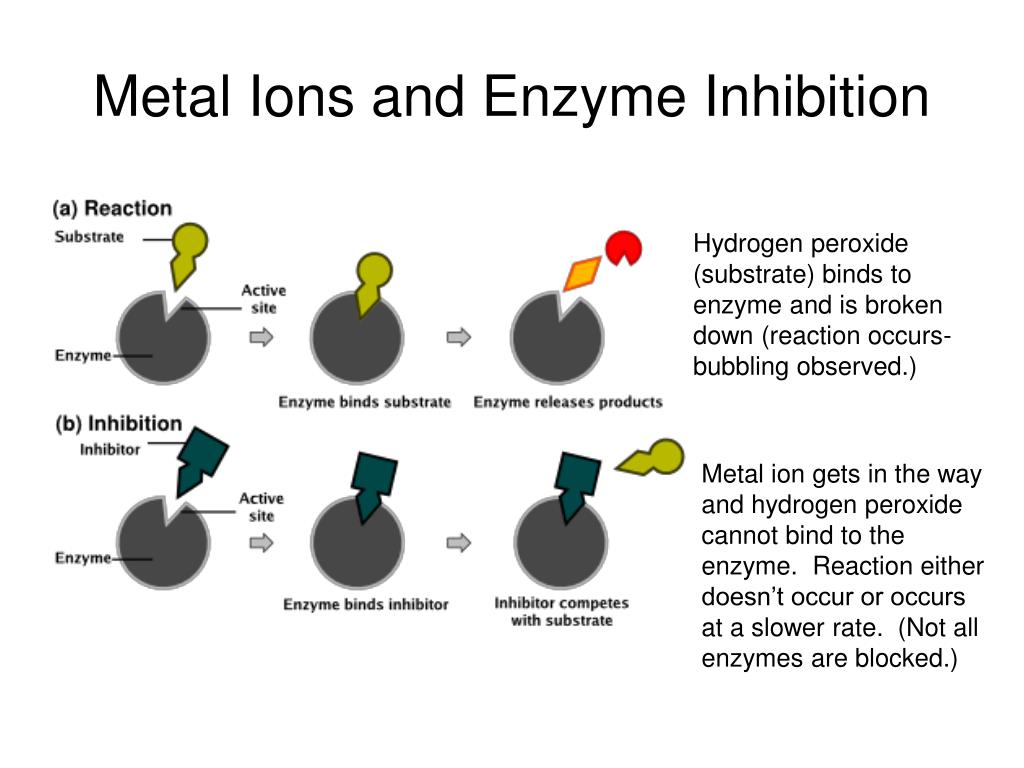
Common Types of Enzyme Markers and Their Significance
Several enzyme markers are routinely used in medical practice to assess organ function and diagnose various conditions. Let’s explore some of the most important ones:
CPK Isoenzymes: Indicators of Muscle and Organ Health
Creatine phosphokinase (CPK) isoenzymes are found in different parts of the body and can provide valuable information about specific organs:
- CPK-1: Primarily found in the brain and lungs
- CPK-2: Associated with heart muscle
- CPK-3: Present in skeletal muscles
Are elevated CPK levels always a cause for concern? While normal CPK levels typically fall below 200 units per liter (U/L) in adults, variations can occur based on age, gender, and race. Elevated levels may indicate various conditions, depending on which isoenzyme is affected:
CPK-1 Elevations
Increased CPK-1 levels may suggest:
- Brain cancer
- Stroke or brain injury
- Pulmonary infarction
- Seizures
- Recent electroconvulsive therapy
CPK-2 Elevations
High CPK-2 levels are often associated with:
- Heart attacks
- Open heart surgery
- Myocarditis (heart muscle inflammation)
- Cardiac procedures like defibrillation

CPK-3 Elevations
Elevated CPK-3 levels may indicate:
- Muscle damage or inflammation
- Recent strenuous exercise
- Muscular dystrophy
- Crush injuries
- Intramuscular injections
Heart Enzymes: Crucial Indicators of Cardiac Health
When it comes to assessing heart health, specific enzyme markers play a vital role in diagnosing and monitoring cardiac conditions.
CK-MB: A Rapid Indicator of Heart Muscle Injury
CK-MB, also known as CPK-2, is a highly specific marker for heart muscle injury. In cases of suspected heart attacks, emergency room physicians often test for CK-MB levels. What are normal CK-MB levels? Generally, CK-MB levels should fall between 5-25 international units per liter (IU/L). Elevated levels can indicate recent heart muscle damage.
Troponin: The Gold Standard for Cardiac Injury Detection
While CK-MB is useful, troponin has become the preferred marker for detecting heart injury. Why is troponin considered superior? Troponin levels remain elevated in the bloodstream for a longer duration, allowing for more accurate diagnosis even if some time has passed since the cardiac event. What constitutes normal troponin levels? Generally, troponin should be less than 0.02 nanograms per milliliter (ng/mL).
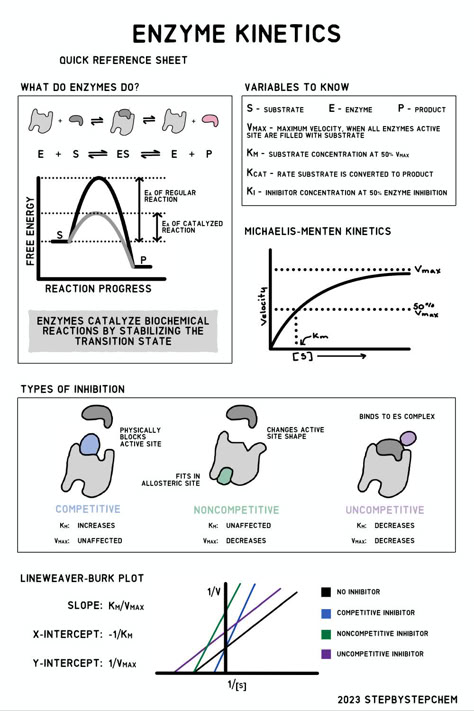
Liver Enzymes: Windows into Hepatic Health
Liver enzyme tests are crucial for assessing liver function and detecting potential liver damage or disease. Two key liver enzymes are commonly measured:
Alanine Aminotransferase (ALT)
ALT is primarily produced by the liver, making it a specific indicator of liver health. What are normal ALT levels? For men, normal ALT levels typically range from 29-33 IU/L, while for women, the range is 19-25 IU/L.
Aspartate Aminotransferase (AST)
AST is found in various organs, including the liver, heart, muscles, and kidneys. What are normal AST levels? For men, normal AST levels usually fall between 10-40 IU/L, and for women, between 9-32 IU/L.
It’s important to note that reference ranges may vary slightly between laboratories, so always compare your results to the specific ranges provided by the testing facility.
Causes of Elevated Liver Enzymes
Elevated liver enzymes can indicate various conditions affecting liver health. What are some common causes of increased liver enzyme levels?

- Medications (prescription and over-the-counter)
- Alcohol consumption
- Liver diseases (hepatitis, fatty liver disease, cirrhosis)
- Obesity
- Celiac disease
- Viral infections
- Inflammatory conditions
- Muscular diseases
- Ischemia (lack of oxygen to the liver)
- Genetic disorders (hemochromatosis, Wilson’s disease)
- Physical trauma to the liver
Understanding the potential causes of elevated liver enzymes helps healthcare providers narrow down possible diagnoses and determine appropriate treatment plans.
The Enzyme Marker Testing Procedure
How are enzyme marker tests performed? Enzyme marker tests are typically conducted through routine blood tests. The procedure is straightforward and requires minimal preparation:
- A healthcare professional will draw a small blood sample from a vein in your arm.
- The sample is sent to a laboratory for analysis.
- Results are usually available within a few days.
Do you need to fast before an enzyme marker test? In most cases, no special preparation or fasting is required for enzyme marker tests. However, it’s essential to inform your doctor about any medications you’re taking, as some drugs can affect enzyme levels.

Interpreting Enzyme Marker Results
Understanding enzyme marker results requires careful consideration of various factors. How do healthcare providers interpret these results?
- Compare results to established reference ranges
- Consider patient’s age, gender, and race
- Evaluate other symptoms and medical history
- Assess potential causes of abnormal levels
- Determine if follow-up tests are necessary
In some cases, multiple tests over time may be required to monitor changes in enzyme levels and establish a clear diagnosis.
When should you be concerned about abnormal enzyme levels?
While slight variations in enzyme levels can occur naturally, significant deviations from normal ranges may indicate underlying health issues. It’s crucial to discuss any abnormal results with your healthcare provider to determine the appropriate next steps, which may include additional testing or treatment.
The Future of Enzyme Marker Testing
As medical science advances, enzyme marker testing continues to evolve. What developments can we expect in the future of enzyme marker diagnostics?
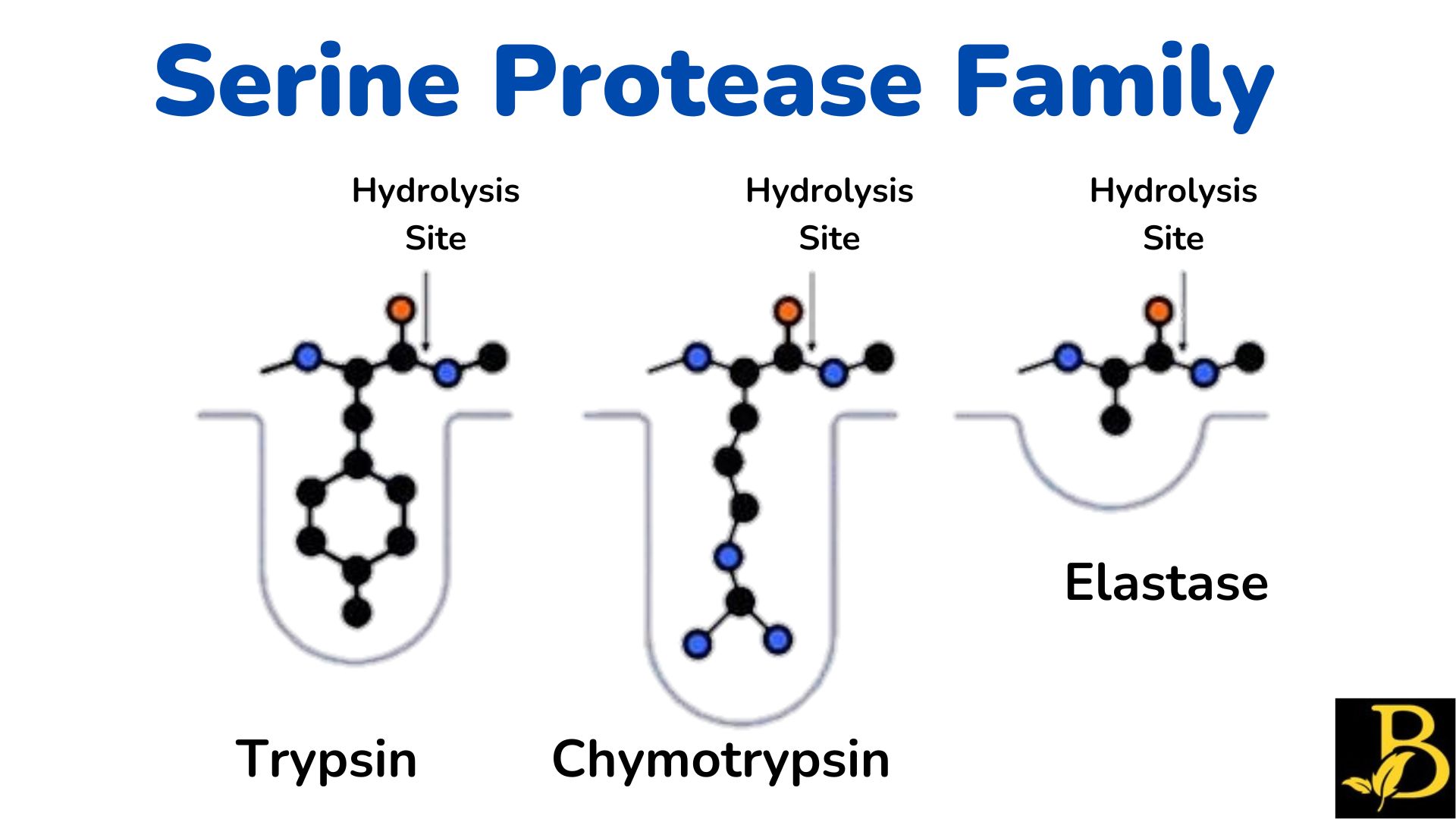
- More specific and sensitive markers for various conditions
- Faster and more accessible testing methods
- Integration of artificial intelligence for result interpretation
- Personalized reference ranges based on individual factors
- Expanded use of enzyme markers in preventive medicine
These advancements promise to enhance the accuracy and efficiency of enzyme marker testing, ultimately improving patient care and outcomes.
Maintaining Healthy Enzyme Levels
While some factors affecting enzyme levels are beyond our control, there are steps we can take to promote overall health and maintain normal enzyme function:
- Adopt a balanced, nutritious diet
- Exercise regularly
- Limit alcohol consumption
- Avoid unnecessary medications
- Manage stress effectively
- Stay hydrated
- Get regular check-ups and screenings
By incorporating these habits into your lifestyle, you can support optimal enzyme function and overall health.
The role of nutrition in enzyme health
How does diet impact enzyme levels and function? A balanced diet rich in vitamins, minerals, and antioxidants can support enzyme production and activity. Some key nutrients for enzyme health include:
- Vitamin B complex
- Vitamin C
- Zinc
- Magnesium
- Manganese
- Selenium
Incorporating a variety of fruits, vegetables, whole grains, and lean proteins can help ensure you’re getting the necessary nutrients to support healthy enzyme function.
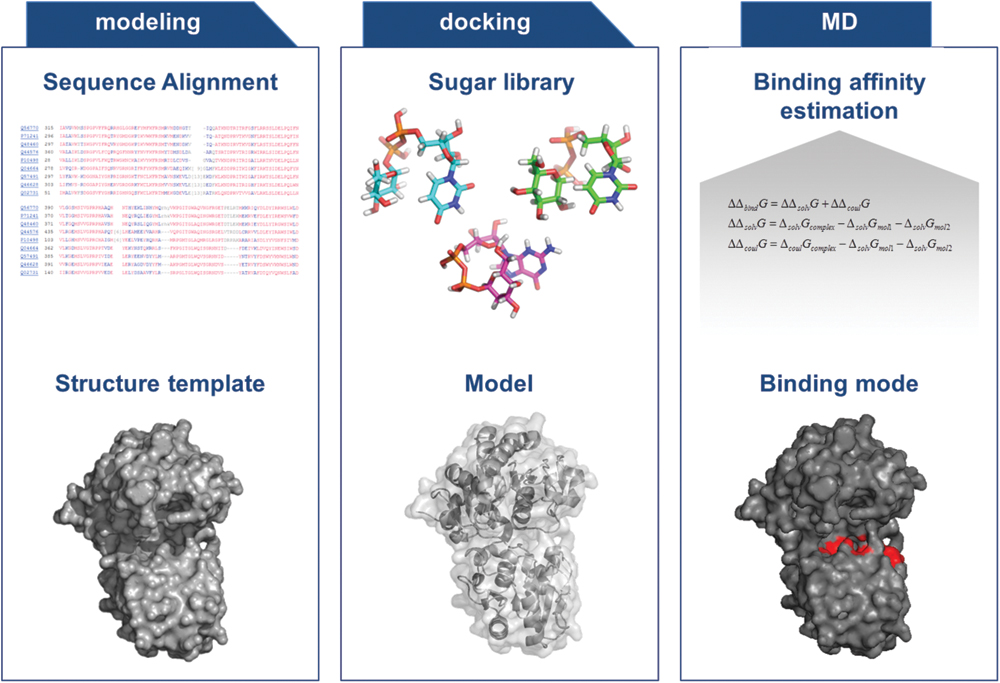
Enzyme Markers in Specific Medical Conditions
Enzyme markers play a crucial role in diagnosing and monitoring various medical conditions. Let’s explore how these markers are used in some common health issues:
Enzyme Markers in Cardiovascular Diseases
How do enzyme markers help in diagnosing heart conditions? In addition to troponin and CK-MB, other enzyme markers can provide valuable information about cardiovascular health:
- Lactate dehydrogenase (LDH): Elevated levels may indicate heart tissue damage
- Brain natriuretic peptide (BNP): Helps diagnose and monitor heart failure
- Myoglobin: Can be an early indicator of heart attack, though less specific than troponin
These markers, when used in combination with other diagnostic tools, help healthcare providers accurately assess and manage cardiovascular conditions.
Enzyme Markers in Pancreatic Diseases
What role do enzyme markers play in diagnosing pancreatic disorders? Several enzymes are crucial for identifying pancreatic issues:
- Amylase: Elevated levels may indicate pancreatitis or pancreatic cancer
- Lipase: Often rises higher than amylase in acute pancreatitis
- Trypsin: Can help diagnose pancreatic insufficiency
Monitoring these enzymes helps in the early detection and management of pancreatic diseases.

Enzyme Markers in Bone Disorders
How can enzyme markers assist in assessing bone health? Specific enzymes play a role in bone metabolism and can indicate bone-related issues:
- Alkaline phosphatase (ALP): Elevated levels may suggest bone disorders or liver problems
- Bone-specific alkaline phosphatase (BSAP): A more specific marker for bone formation
- Tartrate-resistant acid phosphatase (TRAP): Can indicate increased bone resorption
These markers help in diagnosing and monitoring conditions such as osteoporosis, Paget’s disease, and bone metastases.
The Impact of Lifestyle Factors on Enzyme Levels
Various lifestyle factors can influence enzyme levels in the body. Understanding these influences can help individuals make informed choices to maintain optimal health.
Exercise and Enzyme Levels
How does physical activity affect enzyme markers? Regular exercise generally promotes overall health, but intense or prolonged physical activity can temporarily alter enzyme levels:
- Creatine kinase (CK) levels may rise after strenuous exercise, indicating muscle stress
- Lactate dehydrogenase (LDH) can increase during intense workouts
- Aspartate aminotransferase (AST) may elevate slightly due to muscle breakdown
It’s important to consider recent physical activity when interpreting enzyme test results to avoid misdiagnosis.

Diet and Enzyme Function
What dietary factors influence enzyme activity? The foods we consume can have a significant impact on enzyme function:
- High-fat diets may lead to elevated liver enzymes
- Alcohol consumption can increase gamma-glutamyl transferase (GGT) levels
- Certain fruits and vegetables contain enzymes that aid digestion
- Probiotics can support the production of digestive enzymes
Maintaining a balanced diet rich in whole foods can help support healthy enzyme function and overall well-being.
Enzyme Markers in Pediatric Medicine
Enzyme marker testing in children requires special considerations due to developmental differences and age-specific reference ranges.
Age-Specific Reference Ranges
Why are age-specific reference ranges important in pediatric enzyme testing? Children’s bodies are constantly growing and developing, which affects enzyme production and activity. Reference ranges for enzyme markers in pediatrics typically vary by age group, considering factors such as:
- Rapid growth periods
- Hormonal changes during puberty
- Organ maturation
Healthcare providers must use age-appropriate reference ranges to accurately interpret enzyme marker results in children.

Common Pediatric Conditions and Enzyme Markers
How are enzyme markers used to diagnose and monitor pediatric conditions? Some examples include:
- Creatine kinase (CK) for muscular dystrophy diagnosis
- Liver enzymes (ALT, AST) for detecting pediatric liver diseases
- Amylase and lipase for diagnosing pancreatitis in children
- Alkaline phosphatase (ALP) for assessing bone growth and development
These markers help pediatricians identify and manage various childhood diseases and developmental issues.
Emerging Technologies in Enzyme Marker Testing
Advancements in medical technology are revolutionizing the field of enzyme marker testing, offering new possibilities for diagnosis and treatment.
Point-of-Care Testing
How is point-of-care testing changing enzyme marker diagnostics? Point-of-care devices allow for rapid enzyme testing outside of traditional laboratory settings:
- Faster results lead to quicker treatment decisions
- Increased accessibility in remote or resource-limited areas
- Potential for more frequent monitoring of chronic conditions
These advancements are particularly valuable in emergency situations where time is critical.

Genetic Testing and Enzyme Function
What role does genetic testing play in understanding enzyme function? Genetic analysis can provide insights into inherited enzyme disorders:
- Identifying genetic mutations that affect enzyme production
- Predicting individual responses to certain medications
- Assessing risk for enzyme-related diseases
Combining genetic information with enzyme marker testing can lead to more personalized and effective treatment strategies.
Enzyme Markers: Purpose, Procedure, and Results
What are enzyme markers?
Enzymes are highly specialized complex proteins that aid chemical changes in every part of the body. For example, they help break down food so your body can use it effectively. They also help your blood clot. And they’re present in every organ and cell in your body. Enzymes are necessary for your body to function properly.
Enzyme markers are blood tests that analyze specific enzyme activity in the body. Some inherited diseases or conditions can cause these enzymes to stop working or be less efficient. Monitoring the rise or fall of enzyme levels can aid in the diagnosis of a variety of conditions.
Your doctor can order a blood test for enzyme markers, or a routine blood test to help uncover abnormalities. In some cases, you may need to take a test multiple times over the course of several days to measure changes over time.
CPK isoenzymes
The CPK isoenzymes test measures the creatine phosphokinase (CPK) in the blood. CPK enzymes are in the heart, brain, and skeletal muscles. Normal CPK levels vary by age, gender, and race.
CPK enzymes are in the heart, brain, and skeletal muscles. Normal CPK levels vary by age, gender, and race.
Each laboratory may have minor differences in reference ranges, as well. In general, a CPK level of approximately 200 units per liter (U/L) or less is considered normal in an adult. This is the total CPK level in your body. More specific testing can be done, but this is not routine.
Read more: CPK isoenzymes test »
CPK-1 resides mostly in the brain and lungs. Increased levels of CPK-1 can be due to:
- brain cancer
- brain injury, stroke, or bleeding in the brain
- pulmonary infarction, which is the death of lung tissue
- seizure
- electroconvulsive therapy
CPK-2 levels rise following a heart attack. Increased levels of CPK-2 may also be due to:
- open heart surgery
- inflammation of the heart muscle
- heart injury
- defibrillation
- electrical injuries
- chest compressions after cardiac arrest
High CPK-3 levels can be a sign of muscle stress, a crush injury, or injury due to:
- muscle damage, dystrophy, or inflammation
- intramuscular injections
- electromyography, which is a muscle and nerve function test
- recent surgery
- seizures
- strenuous exercise
Heart enzymes
Some heart enzymes slowly enter your blood if you’ve had a heart attack and your heart is damaged as a result. A general test for emergency room patients with heart attack symptoms is a test for the presence of certain proteins in your blood. A doctor may check CPK-2, also known as CK-MB. This marker is highly specific for heart muscle injury and rises rapidly during a heart attack. Normal CK-MB should be between 5-25 international units per liter (UI/L).
A general test for emergency room patients with heart attack symptoms is a test for the presence of certain proteins in your blood. A doctor may check CPK-2, also known as CK-MB. This marker is highly specific for heart muscle injury and rises rapidly during a heart attack. Normal CK-MB should be between 5-25 international units per liter (UI/L).
The preferred marker of heart injury, though, is a protein called troponin. Troponin should generally be less than 0.02 nanograms per milliliter (ng/mL). The level takes longer to rise than CK-MB, but the protein stays in the bloodstream longer.
Learn more: Symptoms of a heart attack »
Liver enzymes
Elevated liver enzymes may be due to inflammation or damaged liver cells. Usually, elevated liver enzymes are related to an acute injury, or a process that occurred over a short period of time due to:
- prescription medications, such as statins
- over-the-counter (OTC) medications, such as acetaminophen (Tylenol)
- alcohol consumption
- heart failure or heart attack
- liver disease, such as hepatitis, fatty liver disease, cancer, and cirrhosis
- obesity
- celiac disease, which is a digestive condition
- viruses, such as cytomegalovirus infection; hepatitis A, B, C, E viruses; mononucleosis; and Epstein-Barr virus
- inflammatory diseases, such as dermatomyositis, pancreatitis, and gallbladder inflammation
- muscular diseases, such as muscular dystrophy or polymyositis
- ischemia, or lack of oxygen going to the liver, such as during cardiac arrest
- hemochromatosis, which is a disorder in which there’s too much iron in the blood
- underactive thyroid
- Wilson disease, which is a disorder where there’s too much copper stored in the body
- physical trauma to the organ
There are several markers that can be used to test liver function. These markers help separate whether or not the injury is to the liver parenchyma (liver cells) or to the biliary system. For the purposes of this article, the important tests are the liver aminotransferases: alanine aminotransferase (ALT) and aspartate aminotransferase (AST).
These markers help separate whether or not the injury is to the liver parenchyma (liver cells) or to the biliary system. For the purposes of this article, the important tests are the liver aminotransferases: alanine aminotransferase (ALT) and aspartate aminotransferase (AST).
ALT is primarily produced by the liver, while AST can be from the liver, cardiac muscle, skeletal muscle, kidney, and brain. A normal ALT level is 29-33 IU/L for men, and 19-25 IU/L for women. A normal AST level may range from 10-40 IU/L for men and 9-32 IU/L for women.
These reference ranges vary from hospital to hospital. It’s important to compare your liver enzyme levels to the reference ranges provided by the lab.
The test is a routine blood test that takes place in a laboratory. No fasting or special preparation is necessary. But tell your doctor before the test about all prescription and OTC medications and supplements you take.
A blood test involves the following steps:
- A healthcare provider will use an antiseptic to clean a small area of your arm, usually the inside of your elbow or the back of your hand.

- They’ll then wrap an elastic band around your upper arm to create pressure and make it easier to access a vein.
- They’ll insert a needle into your vein and blood will flow into a small vial. You’ll likely feel the stick of the needle or a stinging sensation.
- After filling the vial, the healthcare provider will remove the elastic band and the needle.
- They’ll place a bandage over the puncture site and send the blood sample to a lab for analysis.
- The procedure should take only a few minutes.
Your arm may be sore at the puncture site, and you might have some mild bruising or brief throbbing.
Most people have no serious or lasting side effects from a blood test. Rare complications include:
- bleeding
- lightheadedness
- fainting
- infection, which is a small risk whenever the skin is broken
Contact your doctor immediately if you have any of these symptoms.
Abnormal test results can indicate a variety of problems from disease to a simple muscle strain because enzymes are present in every cell of your body. Your doctor will be able to determine a proper course of treatment based on your exact enzyme marker levels and the symptoms you’re having.
Your doctor will be able to determine a proper course of treatment based on your exact enzyme marker levels and the symptoms you’re having.
Severity Grading In Drug Induced Liver Injury – LiverTox
Last Update: May 4, 2019.
The severity of cases of drug induced liver injury can vary greatly, from mild, transient and asymptomatic elevations in serum enzyme levels to acute liver failure leading rapidly to death or need for liver transplantation. In assessing drug induced liver injury, it is important to categorize severity in an objective manner. However, the variability in manifestations of drug induced liver disease makes it difficult to use a single symptom, laboratory abnormality or outcome to grade severity of injury. As a part of ongoing studies of drug induced liver injury, the Drug-Induced Liver Injury Network (DILIN) developed a 5 point scale for grading the severity of liver injury based upon the presence of jaundice, hospitalization, signs of hepatic or other organ failure, and ultimate outcome.
1+, Mild: Raised serum aminotransferase or alkaline phosphatase levels or both, but total serum bilirubin <2.5 mg/dL and no coagulopathy (INR <1.5)
2+, Moderate: Raised serum aminotransferase or alkaline phosphatase levels or both and total serum bilirubin level ≥2.5 mg/dL or coagulopathy (INR ≥1.5) without hyperbilirubinemia
3+, Moderate to Severe: Raised serum aminotransferase or alkaline phosphatase levels and total serum bilirubin level ≥2.5 mg/dL and hospitalization (or preexisting hospitalization is prolonged) because of the drug induced liver injury
4+, Severe: Raised serum aminotransferase or alkaline phosphatase levels and serum bilirubin ≥2.5 mg/dL and at least one of the following:
Prolonged jaundice and symptoms beyond 3 months, or
Signs of hepatic decompensation (INR ≥1.5, ascites, encephalopathy), or
Other organ failure believed to be related to drug induced liver injury
5+, Fatal: Death or liver transplantation for drug induced liver injury
Severity is also graded on the basis of symptoms, with “S” indicating symptoms believed to be caused by the liver injury and “A” absence of symptoms. Symptoms that qualify as possibly due to liver injury include fatigue, weakness, nausea, right upper quadrant pain, itching, skin rash, jaundice, anorexia or weight loss. In all situations, the symptoms should be judged as being due to the drug induced liver injury. This grading applies mostly to patients with enzyme elevations without jaundice, as it is rare for a patient with jaundice not to have symptoms.
Symptoms that qualify as possibly due to liver injury include fatigue, weakness, nausea, right upper quadrant pain, itching, skin rash, jaundice, anorexia or weight loss. In all situations, the symptoms should be judged as being due to the drug induced liver injury. This grading applies mostly to patients with enzyme elevations without jaundice, as it is rare for a patient with jaundice not to have symptoms.
In prospective clinical trials of medications, standard criteria are used to assess the severity of adverse events including symptoms and laboratory test abnormalities. Adverse events are typically graded on a scale of 0 to 4. Grades for severity of liver test abnormalities and symptoms of liver injury have been developed and standardized and are used in many publications of clinical trials and studies of new medications. A commonly used grading system is that developed by the Acquired Immune Deficiency Syndrome (AIDS) Clinical Trials Group (CTG). In this system, the following levels are used to assess severity, with the values expressed as multiples of the upper limit of the normal range (ULN).
| FEATURE | Grade 0 | Grade 1 | Grade 2 | Grade 3 | Grade 4 |
|---|---|---|---|---|---|
| ALT | <1.25 | 1.25-2.5 | >2.5-5.0 | >5.0-10 | >10 |
| AST | <1. 25 25 | 1.25-2.5 | >2.5-5.0 | >5.0-10 | >10 |
| Alkaline Phosphatase | <1.25 | 1.25-2.5 | >2.5-5.0 | >5.0-10 | >10 |
| GGT | <1.25 | Tc_1_1_1_3″ rowspan=”1″ colspan=”1″>1.25-2.5 | >2.5-5.0 | >5.0-10 | >10 |
| Bilirubin | Normal | >1.0-1.5 | >1.5-2.5 | >2.5-5 | >5 |
Descriptive terms are also applied to these grades, with Grade 1 indicating mild, Grade 2 moderate, and Grade 3 severe and Grade 4 life-threatening values. However, it should be stressed that these terms usually overestimate the severity of drug induced liver injury, as ALT levels of 5 to 10 times the upper limit of normal (~200 to 400 U/L) without symptoms or jaundice cannot be considered severe hepatotoxicity, and should instead be referred to as “Grade 3 ALT elevations”. The grading of liver test elevations is sometimes adjusted to baseline values, particularly in patients with underlying liver disease, such as hepatitis B or C. In these situations, Grade 0 represents values <1.25, Grade 1, 1.25-2.5, Grade 2, 2.6-3.5, Grade 3, 3.6-5, and Grade 4, >5 times baseline. This convention, however, is not always used.
The grading of liver test elevations is sometimes adjusted to baseline values, particularly in patients with underlying liver disease, such as hepatitis B or C. In these situations, Grade 0 represents values <1.25, Grade 1, 1.25-2.5, Grade 2, 2.6-3.5, Grade 3, 3.6-5, and Grade 4, >5 times baseline. This convention, however, is not always used.
A similar grading system has been developed by the Cancer Therapy Evalutation Program of the National Cancer Institute (NCI) of the National Institutes of Health, which is referred to as the Common Toxicity Criteria for Adverse Events, version 4.0: CTCAEv4.03. In this system, the following levels are used to assess severity, with the values expressed as multiples of the upper limit of the normal range (ULN).
| FEATURE | Grade 0 | Grade 1 | Grade 2 | Grade 3 | Grade 4 |
|---|---|---|---|---|---|
| Td_1_1_1_1″ scope=”row” rowspan=”1″ colspan=”1″>ALT | Normal | >1.0-3.0 | >3.0-5.0 | >5.0-20 | >20 |
| AST | Normal | >1.0-3.0 | >3.0-5.0 | >5.0-20 | >20 |
| Alkaline Phosphatase | Td_1_1_1_2″ rowspan=”1″ colspan=”1″>Normal | >1.0-2.5 | >2.5-5.0 | >5.0-20 | >20 |
| GGT | Normal | >1.0-2.5 | >2.5-5.0 | >5.0-20 | >20 |
| Bilirubin | Normal | Td_1_1_1_3″ rowspan=”1″ colspan=”1″>>1.0-1.5 | >1.5-3.0 | >3.0-10 | >10 |
Descriptive terms are also applied to these grades, with Grade 1 indicating mild, Grade 2 moderate, and Grade 3 severe and Grade 4 life-threatening values. However, it should be stressed that these terms usually overestimate the severity of drug induced liver injury, as ALT levels of 5 to 20 times the upper limit of normal (~400 to 800 U/L) without symptoms or jaundice cannot be considered severe hepatotoxicity, and should instead be referred to as “Grade 3 ALT elevations”. The grading of liver test elevations is sometimes adjusted to baseline values, particularly in patients with underlying liver disease, such as hepatitis B or C. In these situations, Grade 0 represents values <1. 00, Grade 1, 1.00-2.5, Grade 2, 2.6-5.0, Grade 3, 5.0-20, and Grade 4, >20 times baseline. This convention, however, is not always used.
00, Grade 1, 1.00-2.5, Grade 2, 2.6-5.0, Grade 3, 5.0-20, and Grade 4, >20 times baseline. This convention, however, is not always used.
Thus, the two grading systems have slightly different “cutpoints” to separate the different grades of injury. The AIDS Clinical Trials Group requires an enzyme elevation of at least 1.25 times the ULN to warrant the designation of Grade 1 abnormalities, whereas the NCI system uses any elevation above the ULN as Grade 1 enzyme abnormalities. Similarly, Grade 4 abnormalities in the AIDS CTG system are based on enzyme values above 10 times the ULN, whereas the NCI system uses 20 times ULN.
A problem with all grading systems using the upper limit of normal as an index is that there is little consensus on what the ULN should be or how it should be calculated. Thus, the upper limit of normal of ALT in different testing laboratories can range from 19 to 77 U/L, and some laboratories use a different reference range for women than men. Actually, current automated systems for measuring ALT values yield very similar results and use of common reference limits is reasonable, particularly in multicenter trials. In the LiverTox website, the default ULN for ALT is 40 U/L, alkaline phosphatase 115 U/L and bilirubin 1.2 mg/dL. Serum bilirubin values are particularly confusing when using multiples of the upper limit of normal, as the ULN in different laboratories may be 1.0, 1.2, or 1.5 mg/dL and a Grade 4 elevation may therefore be 10 mg/dL, 12 mg/dL or 15 mg/dL.
In the LiverTox website, the default ULN for ALT is 40 U/L, alkaline phosphatase 115 U/L and bilirubin 1.2 mg/dL. Serum bilirubin values are particularly confusing when using multiples of the upper limit of normal, as the ULN in different laboratories may be 1.0, 1.2, or 1.5 mg/dL and a Grade 4 elevation may therefore be 10 mg/dL, 12 mg/dL or 15 mg/dL.
Enzymes contained in gastric juice: their role and functions
Gastric juice contains the enzyme pepsin, which plays a key role in the process of protein digestion. Learn how pepsin works and how its activity helps the body break down food.
Gastric juice plays an important role in the human digestive process. It contains various enzymes that perform key functions in the breakdown of food. Enzymes are proteins that speed up chemical reactions in the body. There are several main enzymes in the gastric juice, each of which performs its own specific task.
One of the main enzymes in gastric juice is pepsin. It is responsible for the decomposition of proteins into simpler components – peptides and amino acids. Pepsin is active in the acidic environment of the stomach, where it converts the proteins in food into a soluble form so they can be absorbed by the body.
Pepsin is active in the acidic environment of the stomach, where it converts the proteins in food into a soluble form so they can be absorbed by the body.
Another important enzyme is lipase. It is responsible for the breakdown of fats into glycerol and fatty acids. Lipase acts on fats that enter the stomach from food, as well as on fats that are secreted by bile from the liver. Lipase breaks down fats into smaller molecules so that they can be absorbed by the body.
In addition, gastric juice contains a number of other enzymes, such as amylase, which breaks down carbohydrates, and gastrin, a hormone that stimulates the secretion of gastric juice. All of these enzymes work together to ensure efficient digestion and nutrient absorption by the body.
Thus, the enzymes contained in the gastric juice play an important role in digestion. They help break down food into simpler components that can be absorbed by the body. Thanks to these enzymes, efficient digestion occurs and nutrients can be absorbed by the body to maintain its functions and health.
Enzymes in gastric juice: why are they needed?
Enzymes in gastric juice play an important role in the process of digestion. They help break down food into simpler components that the body can absorb and use for energy and nutrients.
One of the main enzymes found in gastric juice is called pepsin. This enzyme is responsible for breaking down proteins into amino acids. It is active in the acidic environment of the stomach and is able to break down complex protein structures into simpler parts.
In addition to pepsin, other enzymes such as lipases and amylases are also present in gastric juice. Lipases are responsible for breaking down fats into glycerol and fatty acids, while amylases break down complex carbohydrates into simple sugars.
Enzymes in the gastric juice play a key role in the processing of food and the proper functioning of the body. Without them, food could not be fully digested and used by the body. Therefore, maintaining the health of the gastrointestinal tract and the normal functioning of enzymes is important for maintaining overall well-being and health.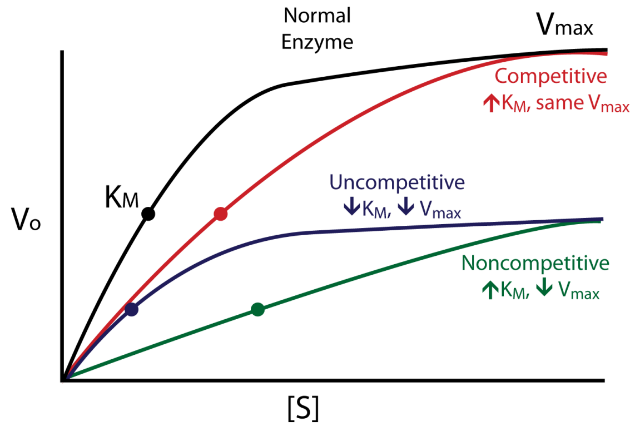
The role of enzymes in digestion
Enzymes play an important role in the body’s digestive system, helping to break down food into simpler components that can be absorbed and used by the body. Enzymes are proteins that catalyze chemical reactions, speeding them up. The gastric juice contains various enzymes that perform certain functions in the process of digestion.
One of the main enzymes contained in gastric juice is pepsin. Pepsin is responsible for breaking down proteins into simpler amino acids. It is active in the acidic environment of the stomach and is able to break bonds between amino acids in proteins, which allows them to be easily absorbed by the body.
Another enzyme found in gastric juice is lipase. Lipase is responsible for the breakdown of fats into glycerol and fatty acids. This process allows the body to absorb and use fat as an energy source.
In addition, amylase is present in the gastric juice, which decomposes carbohydrates into glucose molecules.
This allows the body to absorb and use carbohydrates as an energy source.
Thus, the enzymes contained in gastric juice play an important role in the process of digestion, breaking down food into simpler components that can be absorbed and used by the body. They perform specific functions by breaking down proteins, fats and carbohydrates into simpler molecules, which allows the body to receive the necessary nutrients to sustain life.
The most important enzymes of gastric juice
Gastric juice is one of the key factors in the process of digestion. It contains various enzymes that play an important role in breaking down food and ensuring efficient absorption of nutrients.
One of the main enzymes of gastric juice is pepsin. It is responsible for breaking down proteins into simpler components such as amino acids. Pepsin actively works in the acidic environment of the stomach and is a key factor in the digestive process.
In addition to pepsin, gastric juice also contains gastrin, gastroxin and secretin.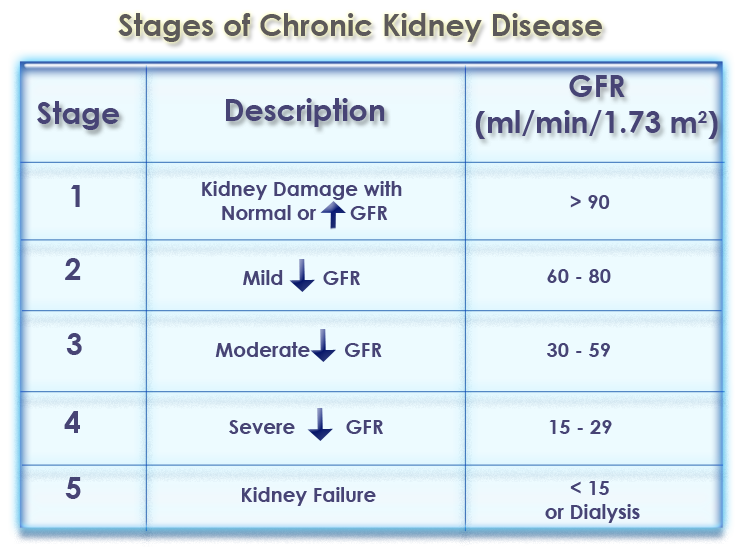 Gastrin stimulates the release of hydrochloric acid, which creates an acidic environment in the stomach and promotes the activation of pepsin. Gastroxin regulates the motor activity of the stomach and is involved in the production of hydrochloric acid. Secretin regulates the secretion of gastric juice and maintains optimal pH in the stomach.
Gastrin stimulates the release of hydrochloric acid, which creates an acidic environment in the stomach and promotes the activation of pepsin. Gastroxin regulates the motor activity of the stomach and is involved in the production of hydrochloric acid. Secretin regulates the secretion of gastric juice and maintains optimal pH in the stomach.
Another important enzyme found in gastric juice is lipase. It is responsible for the breakdown of fats into glycerol and fatty acids, which ensures their absorption by the body. Lipase acts in the alkaline environment of the duodenum, which is formed due to the release of secretin and other enzymes.
Each of these enzymes has a unique function in the digestive process. The interaction between them ensures the efficient breakdown of food and the absorption of nutrients by the body.
Pepsin: the main enzyme for protein breakdown
Pepsin is one of the main enzymes found in gastric juice. Its main function is to break down proteins into simpler components such as peptides and amino acids. Thus, pepsin plays an important role in the process of digestion, ensuring the breakdown of proteins at the molecular level.
Thus, pepsin plays an important role in the process of digestion, ensuring the breakdown of proteins at the molecular level.
The action of pepsin begins in the stomach, where it actively works in an acidic environment. Pepsin is able to break proteins into smaller fragments, which facilitates their further assimilation by the body. This is especially important, since proteins are the main source of amino acids necessary for the synthesis of new proteins and for the normal functioning of the body.
Pepsin is produced in the stomach in an inactive form called pepsinogen. Under the action of hydrochloric acid secreted by the stomach, pepsinogen is converted into active pepsin. This mechanism is important because it prevents damage to the gastric mucosa by pepsin in an inactive form.
The use of pepsin in industry also has its uses. It can be used to break down proteins in foods such as meat and milk to produce a variety of products and ingredients.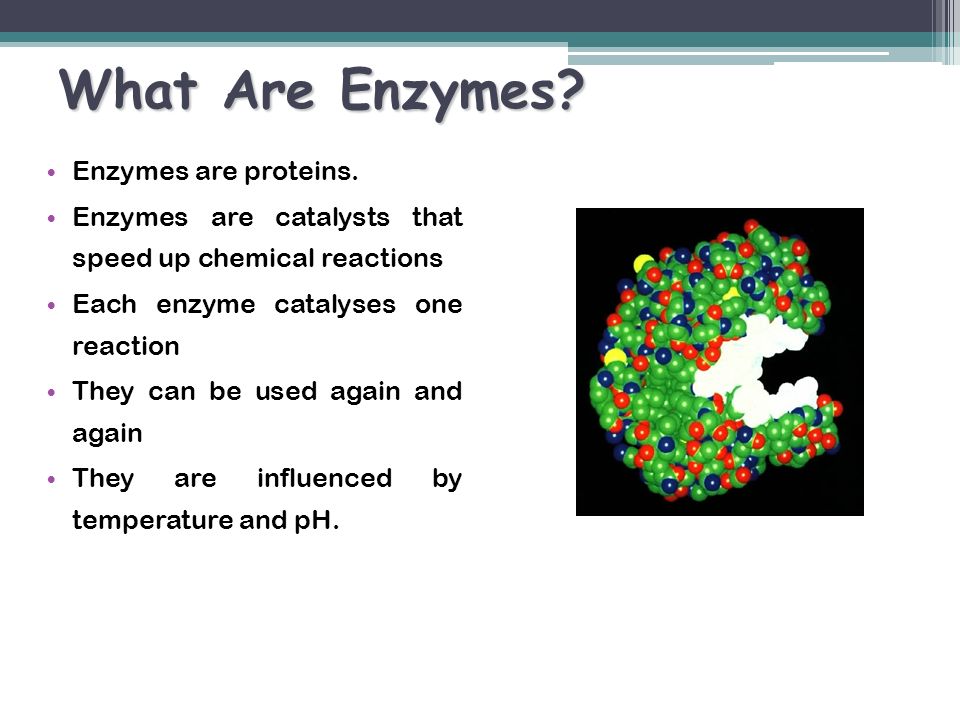 Pepsin is also used in laboratory research to study the properties and structure of proteins.
Pepsin is also used in laboratory research to study the properties and structure of proteins.
Lipase: an enzyme responsible for the breakdown of fats
Lipase is an enzyme that plays an important role in the breakdown of fats in the body. It performs the function of hydrolyzing fatty molecules, breaking them down into the smallest components – glycerol and fatty acids. Thus, lipase ensures the efficient absorption and processing of fatty substances in the body.
Lipase is present in gastric juice and performs its function in the process of digestion. She is actively involved in the breakdown of fats that enter the stomach with food. Fatty molecules that have not been hydrolyzed are more difficult for the body to digest and can cause various digestive problems.
Lipase is highly specific and only effective on fats. It breaks down fatty molecules that are made up of glycerol and fatty acids. The process of splitting fats occurs in several stages, starting with the action of lipase in the stomach and ending with the final processing of hydrolysis products in the intestines.
Lipase plays a key role in the body’s metabolism and energy supply. It ensures the normal functioning of the digestive system and the absorption of fats necessary for the body. Thanks to lipase, the body receives the energy necessary to perform all vital processes.
Amylase: an enzyme for the breakdown of carbohydrates
Amylase is one of the main enzymes found in gastric juice. Its main role is to break down carbohydrates such as starch and glycogen into simpler sugars. This process is called hydrolysis and allows the body to efficiently absorb carbohydrates, which are an important source of energy for the body.
Amylase begins its work already in the oral cavity, where it continues the decomposition of starch into maltose and dextrin. It then passes into the stomach, where it continues its activity for a short time until it is inactivated by gastric juice. The final breakdown of carbohydrates occurs in the small intestine with the help of other enzymes such as maltase and lactase.
Amylase has several forms in the body, including alpha-amylase and beta-amylase. Alpha amylase is the most common and works on starch and glycogen, breaking them down into maltose and dextrin. Beta-amylase, in turn, decomposes starch into maltose. Both of these enzymes are important for normal carbohydrate digestion and providing the body with essential nutrients.
The role of enzymes in digestion
Enzymes play an important role in the digestion process, ensuring that food is broken down to the molecular level and absorbed by the body. They are biological catalysts that speed up chemical reactions without participating in them directly.
Gastric juice contains several enzymes that perform different functions. One of them, pepsin, promotes the decomposition of proteins into simpler amino acids. It is active in the acidic environment of the stomach and helps break down food into particles that can be absorbed by the body.
Another enzyme, lipase, breaks down fats into glycerol and fatty acids.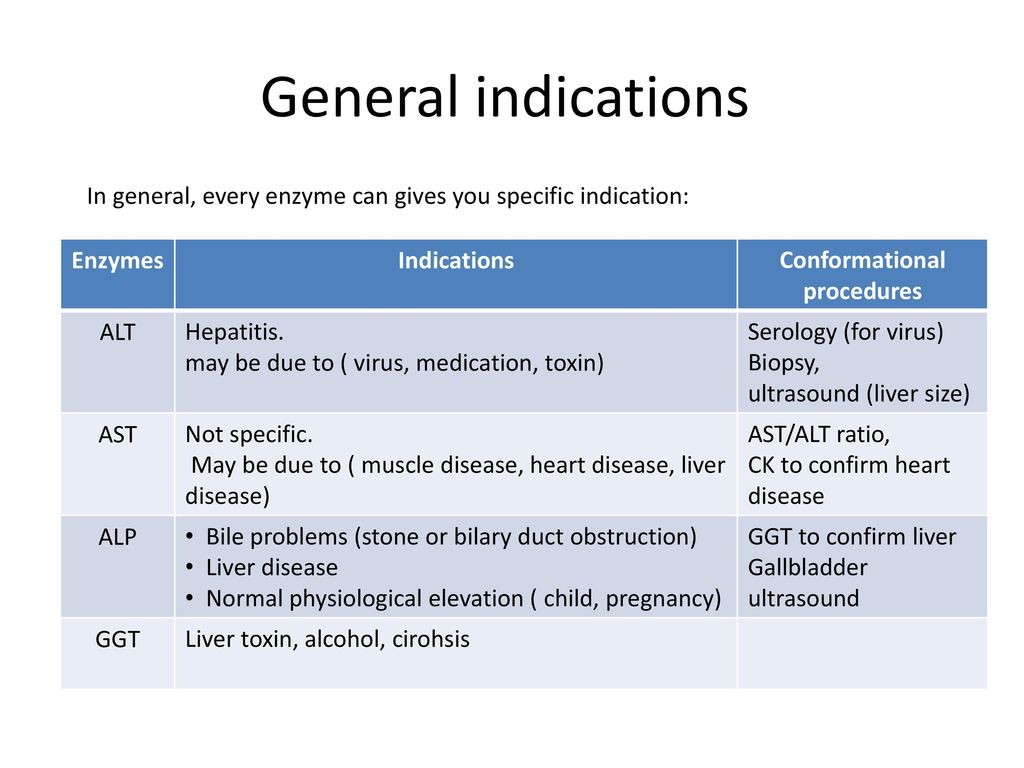 It is also present in gastric juice and plays an important role in the process of fat digestion.
It is also present in gastric juice and plays an important role in the process of fat digestion.
Amylase is another enzyme found in gastric juice that breaks down polysaccharides such as starch and glycogen into glucose molecules. This allows the body to absorb carbohydrates from food and use them as an energy source.
Thus, the enzymes in the gastric juice play an important role in the process of digestion, ensuring the breakdown of food into simpler components that can be absorbed by the body. This allows the body to receive the necessary nutrients and keep it working.
Related videos:
Q&A:
What enzymes are found in gastric juice?
Gastric juice contains several enzymes, the main ones being pepsin and hydrochloric acid.
What role do enzymes play in gastric juice?
Enzymes in gastric juice play an important role in digestion. They help break down proteins into smaller components, making them easier for the body to absorb.
They help break down proteins into smaller components, making them easier for the body to absorb.
What functions does pepsin perform in gastric juice?
Pepsin is the main enzyme of the gastric juice, which is responsible for the breakdown of proteins into peptides and amino acids. It is active in the acidic environment of the stomach and is able to break peptide bonds in proteins, making them more available for further cleavage.
What role does hydrochloric acid play in gastric juice?
Hydrochloric acid has several functions in gastric juice. First, it creates an acidic environment, which is necessary for the activation of pepsin. Secondly, it kills most bacteria and other microorganisms that can enter the stomach with food. Finally, it helps soften food and make it easier to break down.
What other enzymes are present in gastric juice?
In addition to pepsin, other enzymes such as gastrin and somatostatin are also present in gastric juice. Gastrin stimulates the production of gastric juice, and somatostatin, on the contrary, reduces it. These enzymes regulate the digestive process and keep it functioning optimally.
Gastrin stimulates the production of gastric juice, and somatostatin, on the contrary, reduces it. These enzymes regulate the digestive process and keep it functioning optimally.
The effect of enzymes on the general condition of the body
Enzymes contained in gastric juice play an important role in the human body and affect its general condition.
The first effect of enzymes on the body is related to the process of digestion. Gastric enzymes such as pepsin, trypsin, and chymotrypsin break down proteins into simpler compounds called amino acids. This allows the body to receive the necessary nutrients and energy to maintain its vital functions. If the digestion process is disturbed due to lack of enzymes or other causes, it can lead to various health problems such as nutritional deficiencies, metabolic disorders, and even the development of diseases.
The second effect of enzymes on the body is related to the immune system. Certain enzymes, such as lysozyme, help protect the body from infections. Lysozyme breaks down the cell walls of bacteria, making them vulnerable to further destruction by the immune system. In addition, enzymes are involved in the regulation of inflammatory processes in the body. A malfunction of the immune system or a lack of certain enzymes can lead to increased inflammatory activity and various diseases.
Lysozyme breaks down the cell walls of bacteria, making them vulnerable to further destruction by the immune system. In addition, enzymes are involved in the regulation of inflammatory processes in the body. A malfunction of the immune system or a lack of certain enzymes can lead to increased inflammatory activity and various diseases.
The third effect of enzymes on the body is related to metabolism. Enzymes play an important role in the body’s metabolic processes, such as the synthesis and breakdown of molecules. For example, enzymes are involved in the formation of glucose from carbohydrates, the synthesis of fats and proteins. They are also involved in breaking down excess or damaged molecules, helping the body get rid of toxins and metabolic waste. Violation of the work of enzymes can lead to metabolic disorders and the development of various pathological conditions, such as obesity, diabetes, and others.
Thus, the enzymes contained in the gastric juice have a significant impact on the general condition of the body. They ensure the normal process of digestion, protect the body from infections, regulate metabolism and support its vital functions. It is important to maintain the balance of enzymes in the body and ensure that they are sufficient to maintain health and well-being.
They ensure the normal process of digestion, protect the body from infections, regulate metabolism and support its vital functions. It is important to maintain the balance of enzymes in the body and ensure that they are sufficient to maintain health and well-being.
How to keep gastric juices and enzymes healthy?
Gastric juice and enzymes play an important role in the digestive process. To keep them healthy and effective, there are a few key things to keep in mind.
Proper nutrition: The diet should be balanced and contain sufficient nutrients. It is important to eat a variety of foods, including vegetables, fruits, grains, proteins, and healthy fats. Avoid excessive consumption of fatty and fried foods, which can cause gastric acid overload.
Regular meals: Divide your diet into several small meals throughout the day. This will help reduce the load on the gastric juice and facilitate digestion. Try not to eat before bed to give your body time to digest the food.
Moderation in alcohol and caffeine intake: Avoid excessive alcohol and caffeine intake as they can irritate the stomach and impair enzyme function. If you have stomach problems, you should limit your intake of these drinks.
Avoid stress: Stress can affect the functioning of gastric juices and enzymes. Try to engage in regular relaxation practices such as yoga or meditation to reduce your stress levels.
Drink enough water: Water plays an important role in digestion and helps to maintain optimal functioning of gastric juices and enzymes. It is recommended to drink at least 8 glasses of water throughout the day.
Moderate exercise: Regular moderate exercise helps to normalize the work of gastric juice and enzymes. They help improve blood circulation and enhance digestion.
Avoid smoking: Smoking affects the health of gastric juices and enzymes. It can cause irritation of the gastric mucosa and reduce the activity of enzymes. Therefore, it is recommended to avoid smoking and passive smoking.
Therefore, it is recommended to avoid smoking and passive smoking.
Following these guidelines will help maintain healthy gastric juices and enzymes, which in turn promotes normal digestion and overall health.
Diagnosis of pancreatitis – blood test for lipase and amylase
Amylase and lipase are digestive enzymes. Their amount in the bloodstream is used to diagnose the condition of the pancreas in case of suspected pancreatitis. Analyzes can be carried out at the direction of a doctor or at the request of the patient, but only a specialist can interpret the results and, if necessary, prescribe treatment. To obtain the most accurate results, special preparation is required before donating blood. Within 10 hours before the tests, it is necessary to refuse to eat food, avoid significant physical exertion, stress.
Lipase test
Lipase is an enzyme that is necessary for the breakdown of fats. The results of a blood test for lipase play an important role in the diagnosis of diseases such as obstruction of the pancreatic duct and pancreatitis in acute or chronic form.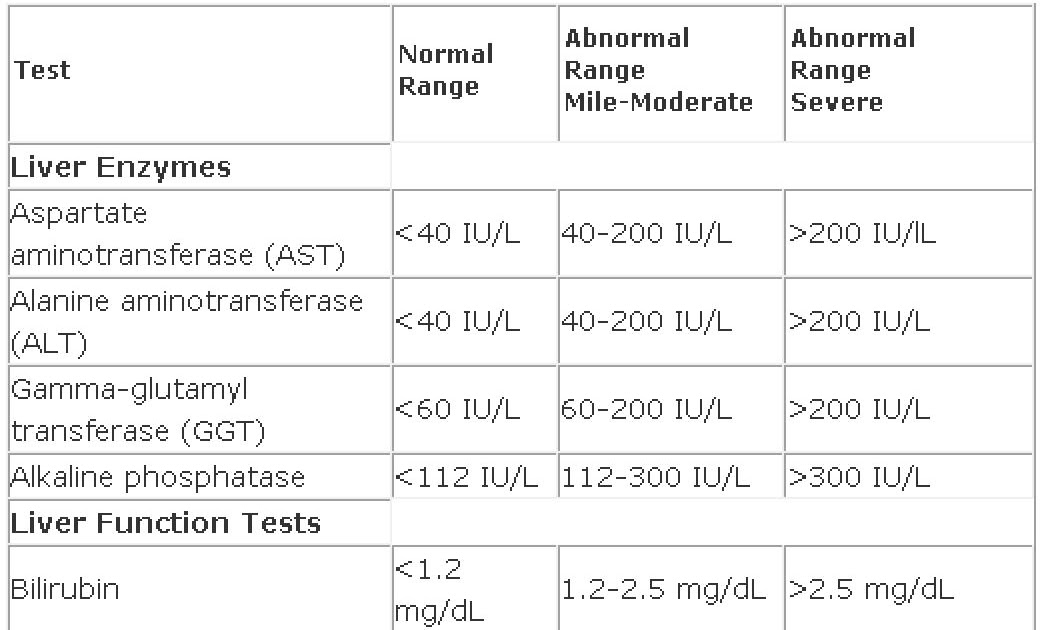 Reference values for this enzyme are 13-60 IU/L. If the test results are within these values, this indicates that at the moment the pathological process does not affect the pancreas.
Reference values for this enzyme are 13-60 IU/L. If the test results are within these values, this indicates that at the moment the pathological process does not affect the pancreas.
Elevated levels of may indicate acute or chronic inflammation, neoplastic changes, traumatic injury to the pancreas, blockage of its ducts. Based on the results of one test, it is impossible to make an accurate diagnosis and choose an effective treatment method. For this, an examination is prescribed, which may include both laboratory tests and instrumental studies.
Concentration too low enzyme in the blood may indicate a decrease in the functional activity of the pancreas or cystic fibrosis.
Determining the level of lipase has a high diagnostic value in identifying various pathologies of the pancreas. The enzyme is produced only by the cells of this organ, so it can be used as a marker of its condition.
When interpreting the results, the patient’s age, clinical picture, results of other studies and other factors are taken into account.
Amylase test
Amylase is an enzyme responsible for the breakdown of carbohydrates. It, unlike lipase, is produced not only by the pancreas, but also by the salivary glands. In addition, a certain amount of the enzyme is formed in the skeletal muscles, intestines and ovaries. A blood test for amylase is prescribed for patients with acute or chronic pancreatitis, with suspicion of pathology of the ovaries or salivary glands.
In patients over 18 years of age, the enzyme level should not exceed 53 U / l. The norm for children varies depending on their age. The level of pancreatic amylase is analyzed by the doctor, taking into account the total amount of the enzyme. In acute pancreatitis, in most cases there is a significant increase in the amount of pancreatic enzyme. Sometimes the increase in indicators is insignificant or they remain within the normal range. The test results do not reflect the degree of damage to the pancreas, so a comprehensive examination is carried out to confirm the diagnosis and develop a treatment regimen.


 This allows the body to absorb and use carbohydrates as an energy source.
This allows the body to absorb and use carbohydrates as an energy source.